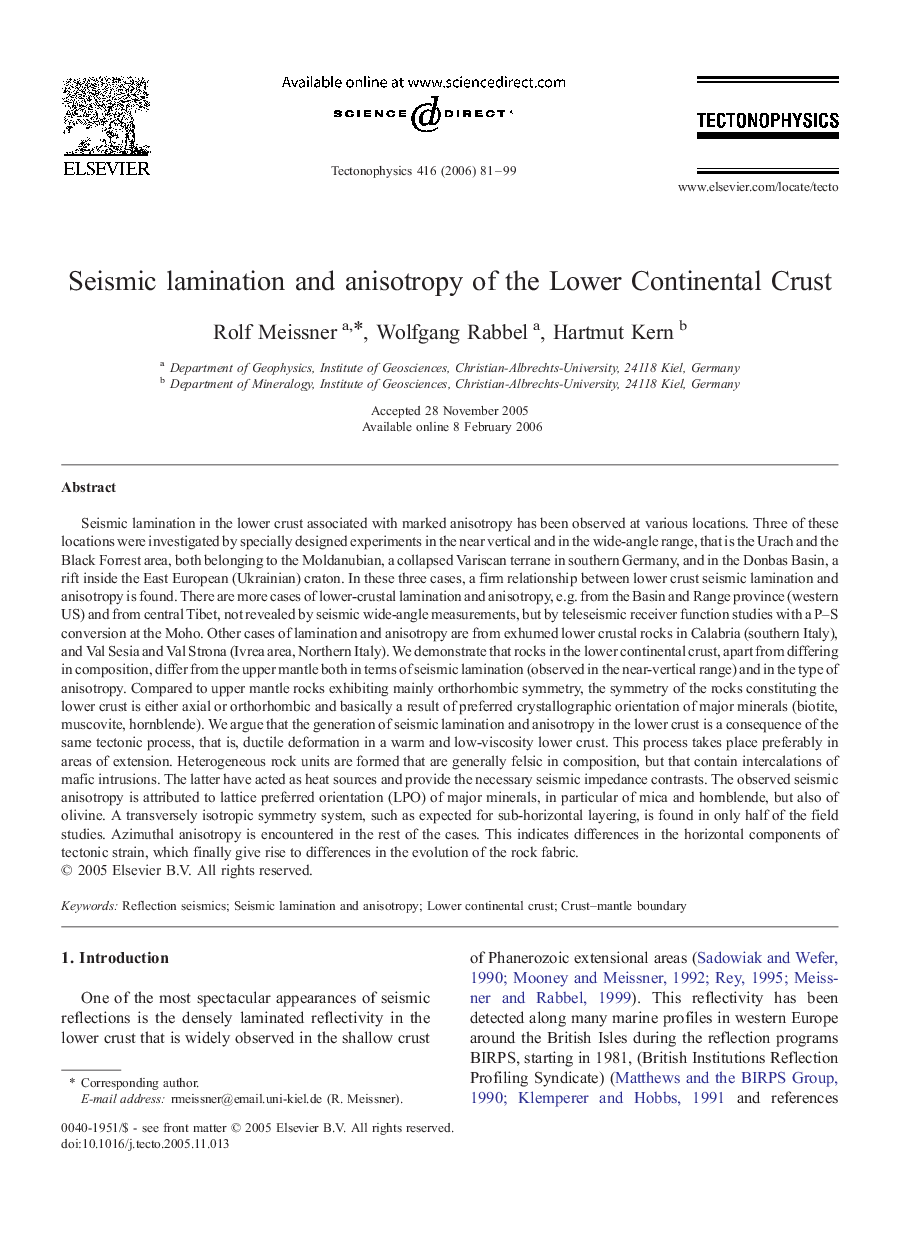| کد مقاله | کد نشریه | سال انتشار | مقاله انگلیسی | نسخه تمام متن |
|---|---|---|---|---|
| 4695295 | 1636960 | 2006 | 19 صفحه PDF | دانلود رایگان |

Seismic lamination in the lower crust associated with marked anisotropy has been observed at various locations. Three of these locations were investigated by specially designed experiments in the near vertical and in the wide-angle range, that is the Urach and the Black Forrest area, both belonging to the Moldanubian, a collapsed Variscan terrane in southern Germany, and in the Donbas Basin, a rift inside the East European (Ukrainian) craton. In these three cases, a firm relationship between lower crust seismic lamination and anisotropy is found. There are more cases of lower-crustal lamination and anisotropy, e.g. from the Basin and Range province (western US) and from central Tibet, not revealed by seismic wide-angle measurements, but by teleseismic receiver function studies with a P–S conversion at the Moho. Other cases of lamination and anisotropy are from exhumed lower crustal rocks in Calabria (southern Italy), and Val Sesia and Val Strona (Ivrea area, Northern Italy). We demonstrate that rocks in the lower continental crust, apart from differing in composition, differ from the upper mantle both in terms of seismic lamination (observed in the near-vertical range) and in the type of anisotropy. Compared to upper mantle rocks exhibiting mainly orthorhombic symmetry, the symmetry of the rocks constituting the lower crust is either axial or orthorhombic and basically a result of preferred crystallographic orientation of major minerals (biotite, muscovite, hornblende). We argue that the generation of seismic lamination and anisotropy in the lower crust is a consequence of the same tectonic process, that is, ductile deformation in a warm and low-viscosity lower crust. This process takes place preferably in areas of extension. Heterogeneous rock units are formed that are generally felsic in composition, but that contain intercalations of mafic intrusions. The latter have acted as heat sources and provide the necessary seismic impedance contrasts. The observed seismic anisotropy is attributed to lattice preferred orientation (LPO) of major minerals, in particular of mica and hornblende, but also of olivine. A transversely isotropic symmetry system, such as expected for sub-horizontal layering, is found in only half of the field studies. Azimuthal anisotropy is encountered in the rest of the cases. This indicates differences in the horizontal components of tectonic strain, which finally give rise to differences in the evolution of the rock fabric.
Journal: Tectonophysics - Volume 416, Issues 1–4, 5 April 2006, Pages 81–99